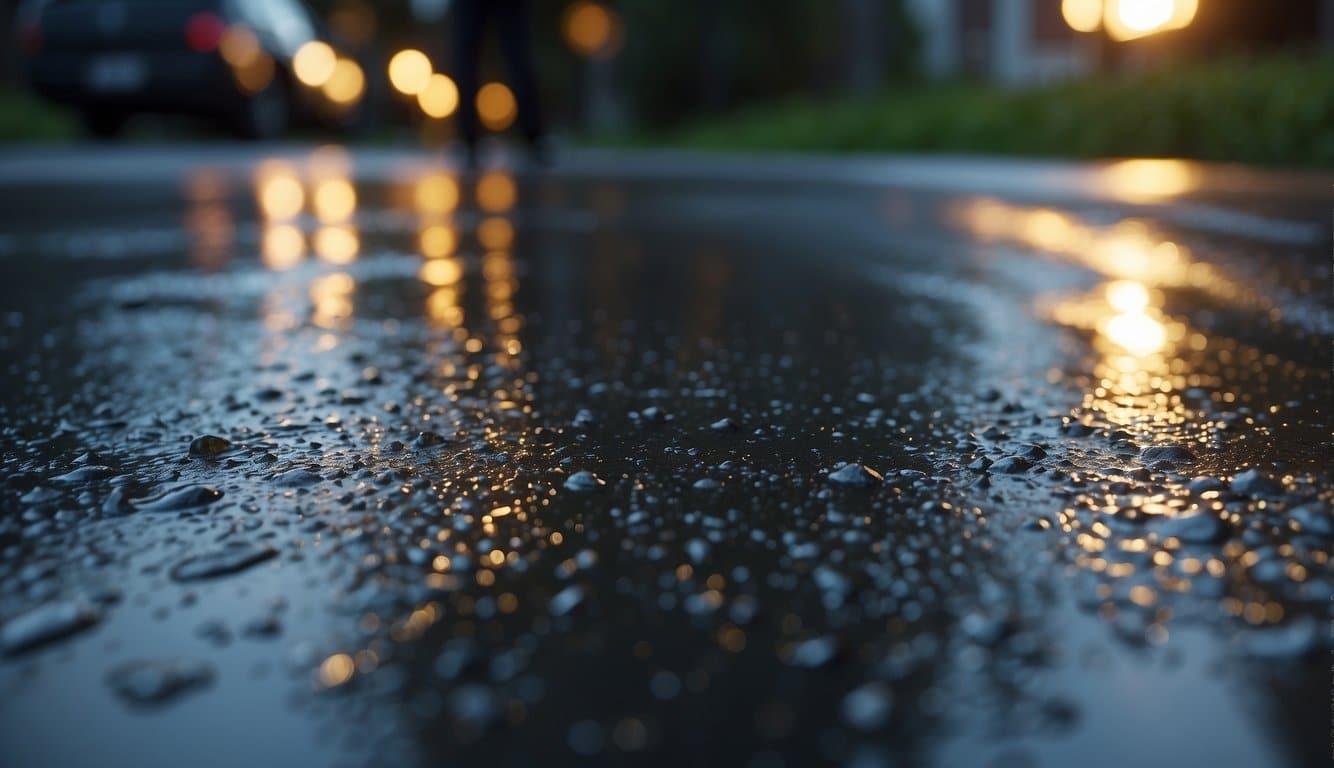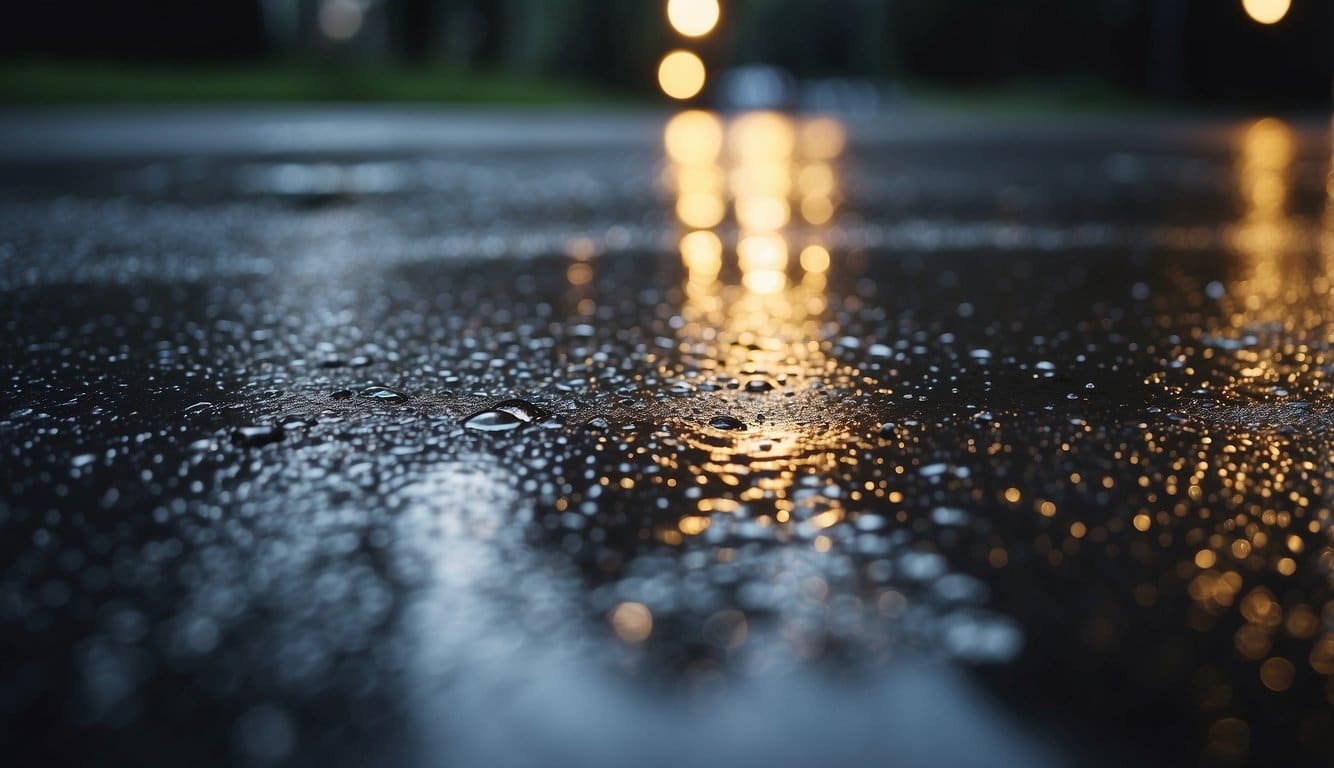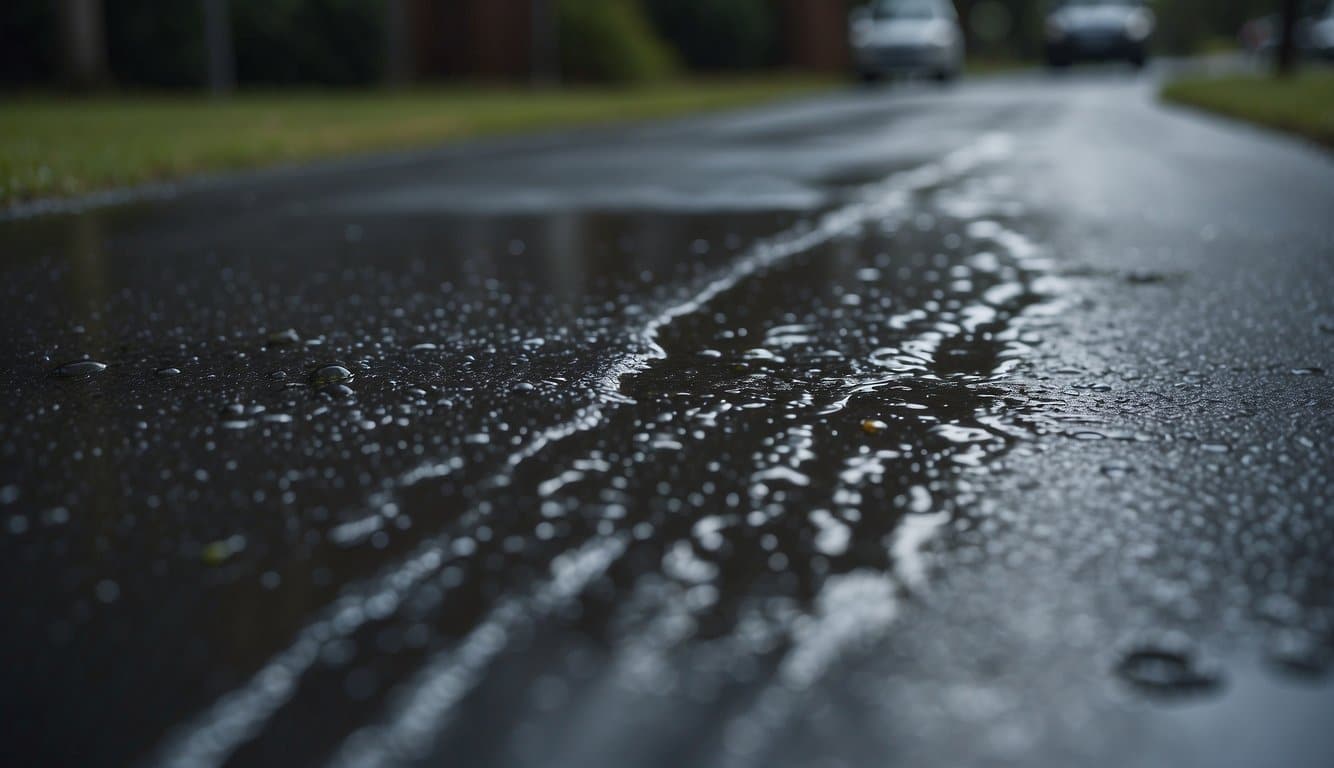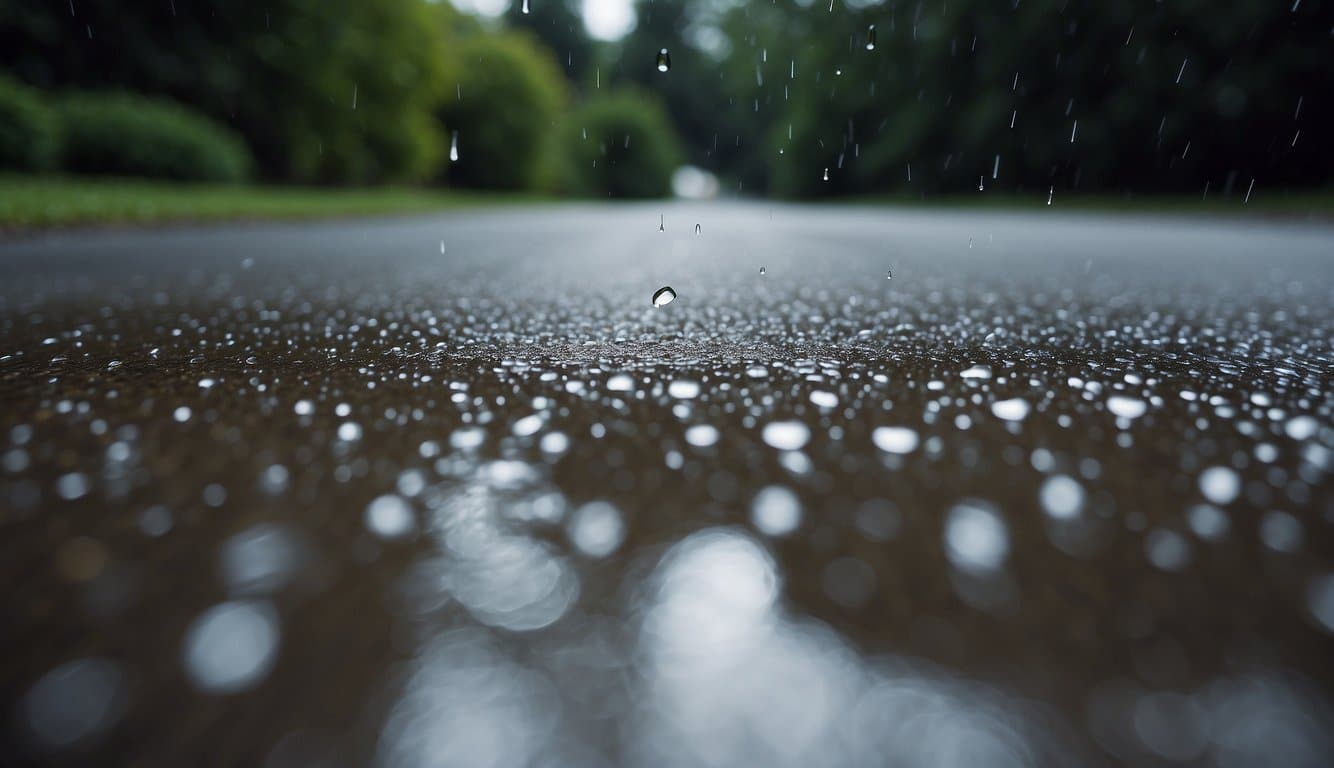Sealing a driveway is a common method of preserving its integrity and enhancing its appearance. This process involves applying a protective layer over the asphalt or concrete to shield it from the elements, including water, oils, and UV damage.
12 hours of dry weather is needed after sealing for the process to be successful
While the application of sealant is straightforward, timing plays a critical role in its effectiveness. Rainfall within a short time after sealant application can compromise the seal and lead to inadequate protection or the need for another application.
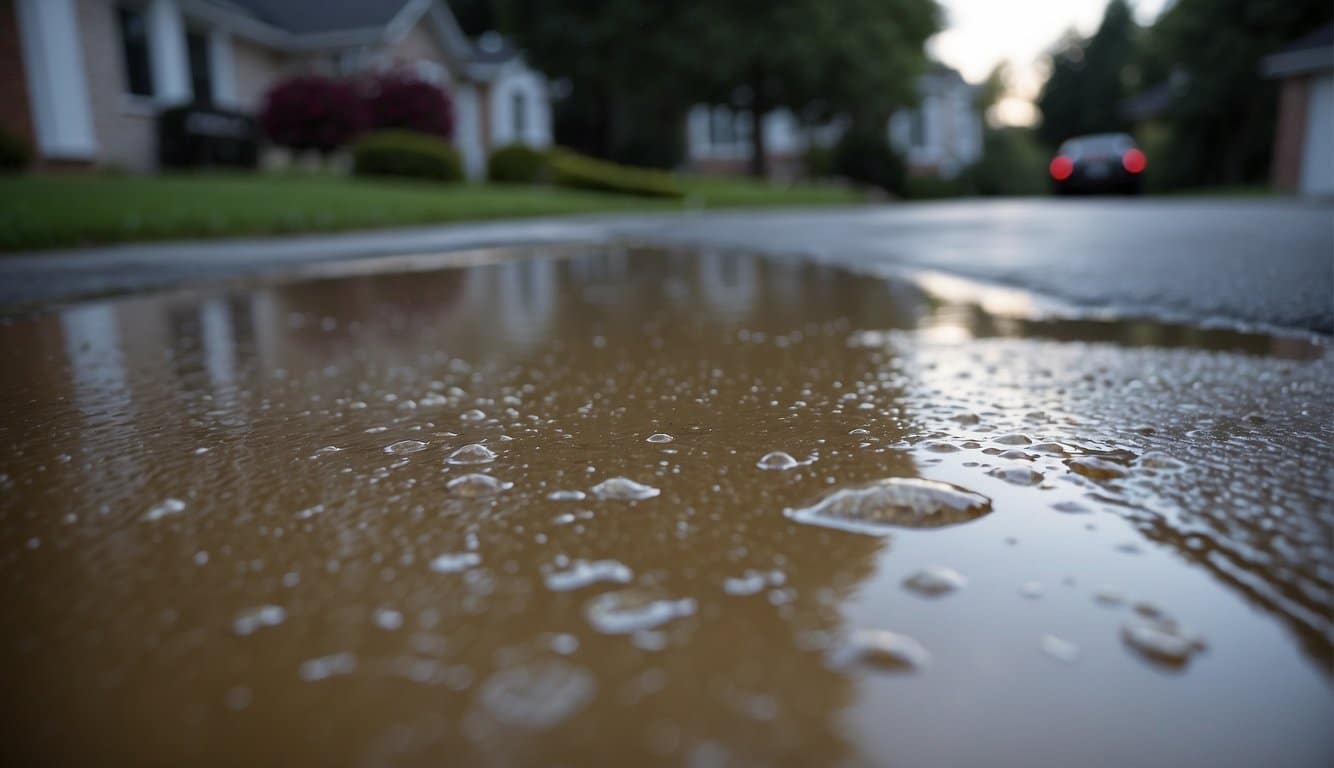
Weather forecasting is an essential aspect of planning a driveway sealing project. Professionals recommend checking weather conditions carefully before starting, as the sealer requires a dry surface and adequate curing time free from rainfall.
The consensus is that a minimum of 12 hours of dry weather is needed after sealing for the process to be successful. This period allows the sealant to adequately bond to the driveway’s surface and form a durable, protective skin.
Homeowners also need to pay attention to post-sealing care, ensuring they follow the correct steps to maintain the sealant’s longevity and finish.
Key Takeaways
- Sealing a driveway requires dry conditions and proper timing.
- A 12-hour dry period post-application is typically recommended.
- Proper maintenance following sealing enhances the sealant’s durability.
Pre-Sealing Considerations
Before embarking on the process of sealing a driveway, certain factors demand careful consideration to ensure the longevity and effectiveness of the sealant.
Weather Forecast Evaluation
Properly evaluating the weather forecast is critical before sealing a driveway. Sealant requires a dry, warm climate for optimal adherence and curing.
- Ideal Conditions: A clear forecast with no rain expected for at least 24 hours post-application.
- Temperature: Aim for a forecast where temperatures will remain above 50°F for 24 hours.
Material Selection
Choosing the right sealant can mean the difference between a durable finish and a wasted effort.
- Acrylic-based Sealers: Known for their quick-drying properties and resilience.
- Coal Tar Sealers: Provide robust protection but need a longer curing time.
Selecting a sealer should also involve consideration of the local climate, the driveway’s usage, and the specific manufacturer’s instructions regarding drying times.
Sealing Process
Proper sealing of a driveway is essential to protect it from the elements, enhance its appearance, and extend its lifespan. The sealing process involves a series of methodical steps, each crucial to ensuring a durable and effective seal.
Driveway Cleaning
Prior to sealing, the driveway must be thoroughly cleaned. This involves:
- Removing debris: Sweep away dirt, leaves, and loose stones.
- Treating stains: Apply a degreaser to oil spots and scrub thoroughly.
- Washing: Use a power washer to remove any remaining dirt and grime.
Application Technique
The technique for applying sealer is vital for an even coat and proper adherence. Key points include:
- Sealer type: Use a high-quality sealer suitable for the pavement type.
- Tools: Apply with a squeegee, brush, or sprayer for even distribution.
- Method:
- Start at the garage end and work towards the street.
- Overlap each pass to ensure full coverage without leaving bare spots.
- Apply in thin, uniform layers to facilitate adequate drying.
Drying Time Estimation
Timing is critical when it comes to sealing a driveway. Consider the following:
- Dry weather: Choose a time frame with at least 12 hours of expected dry weather.
- Temperature: Ideal conditions are warm, sunny days with low humidity.
- Drying time: Most sealants need 4-8 hours of dry time; check specific product instructions for precise times.
Post-Sealing Protocols
Following a driveway sealing, it’s imperative to implement certain measures that will ensure the sealer sets correctly, especially with the unpredictable nature of weather.
Taking proper steps to weatherproof the sealed surface and installing physical barriers can prevent the freshly applied sealer from becoming ineffective.
Weatherproofing Measures
To safeguard the new sealer against potential rainfall, homeowners should monitor the weather forecast closely before initiating the sealing process.
- Sealing should not be done if rain is predicted within 24 hours.
- Hourly Checks: Regularly check the weather forecasts for sudden changes.
- Drying Time: Allow a minimum of 24-48 hours for the sealer to properly dry in ideal conditions.
Physical Barrier Installation
If rain is unforeseen and occurs shortly after application, a physical barrier may help in protecting the driveway.
- Tarp Covering: Quickly cover the sealed area with tarps or plastic sheeting.
- Weighted Edges: Secure the edges of the covering with heavy objects to prevent it from blowing away.
Maintenance Tips
After the completion of a driveway sealing project, proper maintenance is crucial to ensure longevity and effectiveness of the sealant.
Homeowners should adopt a proactive approach to inspect and maintain their sealed driveways to prevent premature wear and damage.
Regular Inspection
Homeowners should regularly inspect their driveway surface for any signs of cracks or wear. They should scheduled inspections at least twice a year, ideally during the spring and fall. This routine helps to catch issues early before they turn into significant problems.
During inspections:
- Look for cracks: Small hairline cracks can develop into larger fissures if left unattended.
- Check the sealant’s integrity: Ensure that the sealant is still properly adhering to the asphalt and is not peeling or flaking.
Spot Treatment
If minor issues are identified during an inspection, homeowners should perform spot treatments to address these areas before they worsen.
Here’s how to carry out effective spot treatment:
- Clean the area: Remove any dirt or debris from the affected spot.
- Apply filler: For cracks, use an appropriate crack filler; ensure it’s compatible with the driveway’s sealant.
- Seal the spot: Once the filler dries, apply a small amount of sealant over the area to protect the new repair from the elements.
Frequently Asked Questions
In tackling the maintenance of an asphalt driveway, homeowners often have specific questions regarding the sealing process and timing related to weather conditions, specifically rain. These FAQs provide clarity on best practices for driveway sealing and its aftermath.
How long should I wait before driving on a freshly sealed driveway?
Typically, it is advised to wait a minimum of 48 hours before driving on a freshly sealed driveway to ensure the sealant has adequately cured and can withstand the pressure of vehicle tires.
What is the minimum dry time for driveway sealer before it’s safe from rain?
To safeguard the integrity of the sealant, the driveway should be dry for at least 4 to 8 hours before any rainfall to prevent it from washing away or becoming damaged.
What are the consequences of rain falling on a driveway that has been recently sealed?
If rain falls on a driveway that has just been sealed and the sealant hasn’t had enough time to dry, it can cause the sealer to become diluted and wash away, which compromises the protective layer and its aesthetic appearance.
How can I tell if my driveway sealer has dried completely?
A fully dried driveway sealer will have a uniform appearance, feel dry to the touch, and will not transfer onto shoes or tires. It’s important to check the weather forecast to ensure there is sufficient time for the sealer to fully cure.
Is it possible to walk on a driveway soon after it has been sealed?
Walking on the driveway should be avoided for at least 4 to 6 hours after the sealing process to prevent footprints and to allow proper drying and curing of the sealant.
What should I do if tire marks appear on a driveway that has just been sealed?
If tire marks are noticed, they should be left as is. Over time, with additional curing and use of the driveway, they often diminish.
